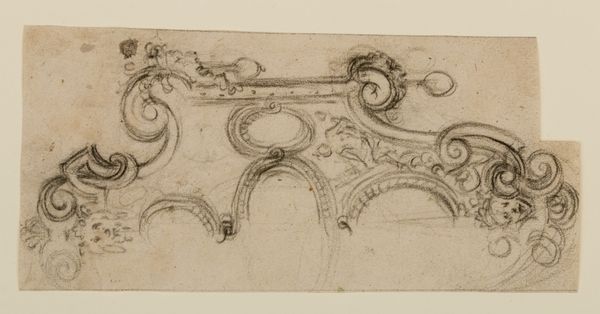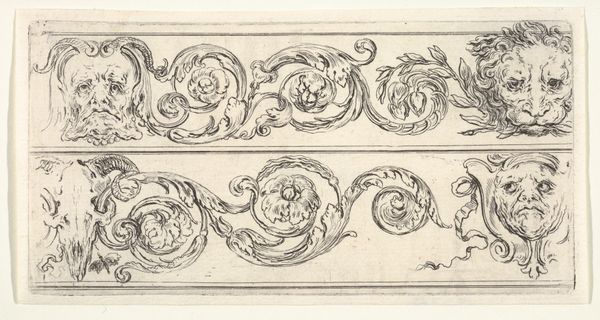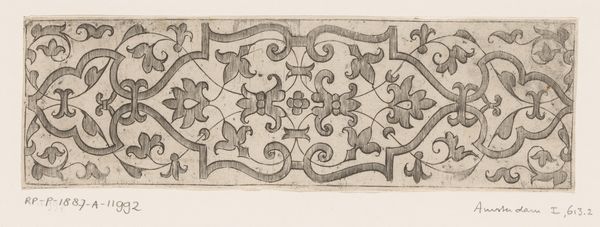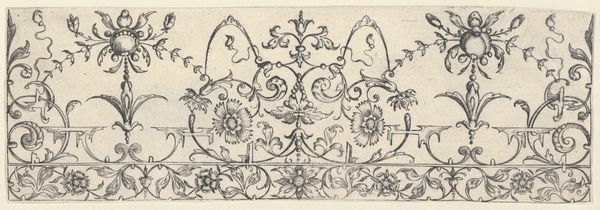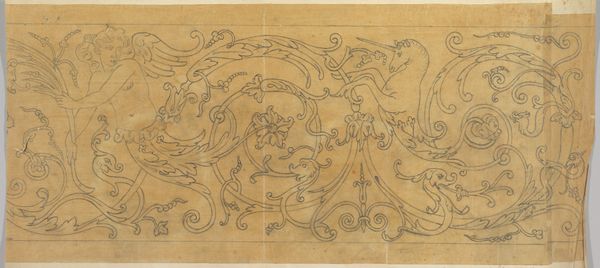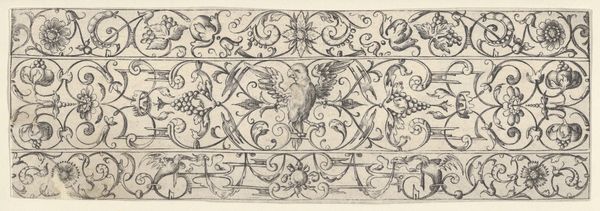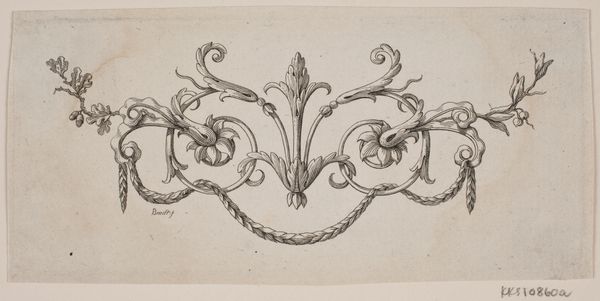
Panel of Curvilinear Metal Ornament Adorned with Masks and Winged Figures 1850 - 1900
0:00
0:00
drawing, print, ink, engraving
#
drawing
# print
#
pen sketch
#
ink line art
#
ink
#
geometric
#
decorative-art
#
engraving
Dimensions: sheet: 3 x 12 1/2 in. (7.6 x 31.7 cm)
Copyright: Public Domain
Curator: Let's dive into this exquisite design study, a "Panel of Curvilinear Metal Ornament Adorned with Masks and Winged Figures," believed to be created sometime between 1850 and 1900. Editor: My first thought? Restraint. It’s all curls and swoops, but contained, almost as if a wild impulse was perfectly, mathematically tamed. What’s it made from, this design? Curator: Well, the study itself is ink and engraving, though the *intended* final product would have been wrought in metal, perhaps iron or bronze, as part of a larger architectural feature. It’s utterly beautiful when you think about the labour gone into it, a skilled hand drafting this onto paper with such detail. Imagine translating that to hot metal, hammer blow by hammer blow! Editor: Yes, thinking about the materiality brings it alive, doesn't it? Who exactly would have done that work, in that period? Was this design destined for a grand public building, or something more domestic? Who was profiting? That intense level of detail... Was it really "decorative", or essential to their cultural outlook? Curator: The anonymity here is something of a melancholy question. Was the maker simply lost to time, their role deemed insignificant, or did the design somehow "emerge"? Maybe a collaboration within a workshop... a lost masterpiece? But I also think of this design's incredible vitality. There’s life tucked into all these swooping forms. Masks, winged figures, faces within flowers—they almost breathe on the page! Editor: They *are* striking, how those figures almost dissolve into the metalwork. Speaking of materials, think of all the metal available in Europe and America by the 1850s, fuelled by global resource extraction. That "restraint" you first perceived… could that actually reflect anxieties about the industrial process running wild? So much consumption to enable such elaborate ornamentation… Curator: Possibly! I had considered that the ornament serves as a counterpoint to encroaching industrialisation - bringing nature into domestic space, civilising metal with beauty, almost conjuring the metal back into life. We really have the ability to imagine different meanings, for these little ink squiggles. Editor: It’s fascinating, how different perspectives make such connections, even though all of this is in only a singular line across this simple sheet! We may never understand the exact hand that made this drawing and intended it as the model for physical material transformation. Curator: Agreed. And now it remains to prompt *our* transformation, isn't that just brilliant!
Comments
No comments
Be the first to comment and join the conversation on the ultimate creative platform.


